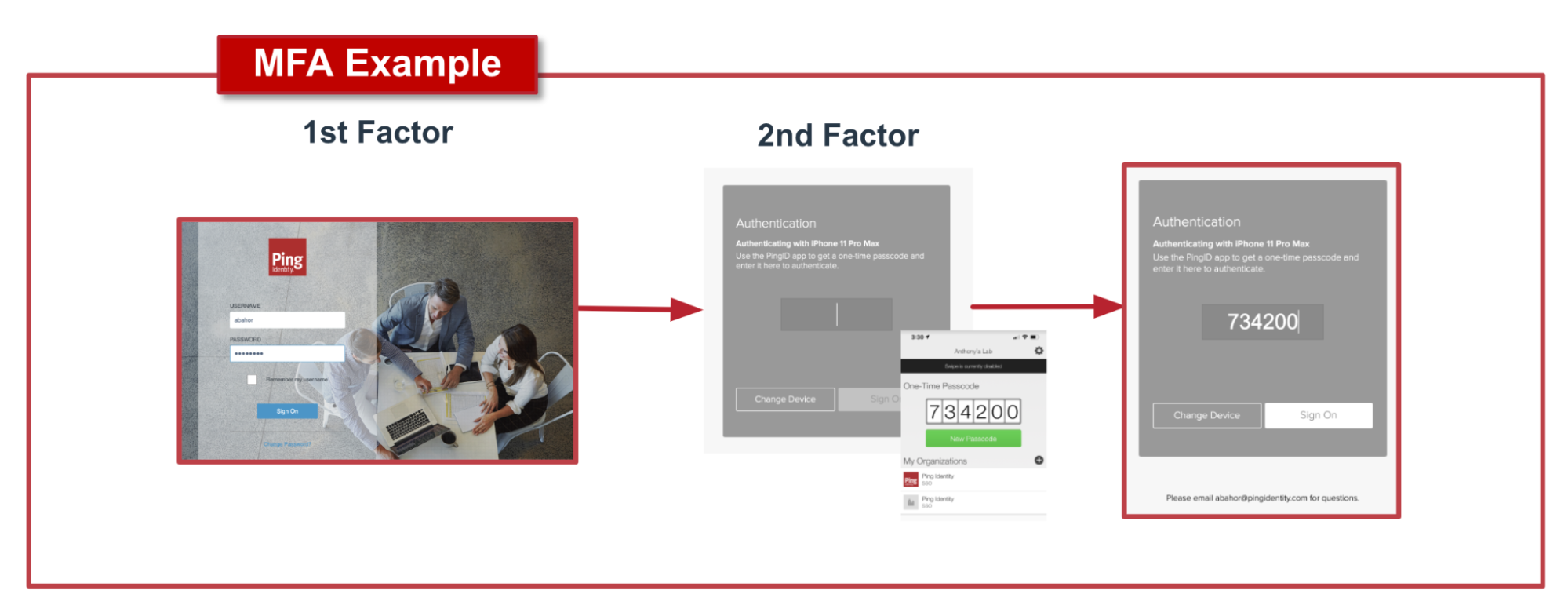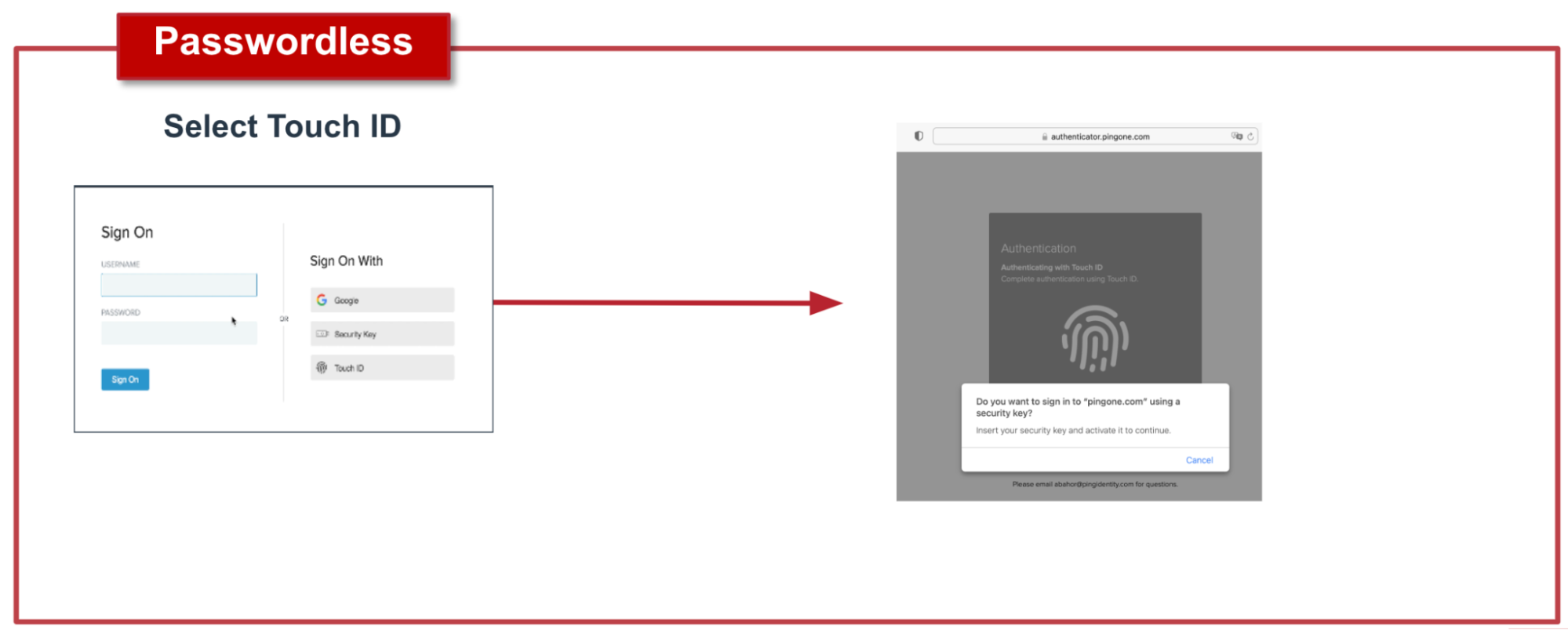Best Practices: Journey to Passwordless
Learn about how passwordless authentication reduces friction for users.
Your enterprise is more than likely taking advantage of using multi-factor authentication (MFA). This enables step-up authentication by providing a second factor with authentication. The second factors have multiple methods an administrator can configure, which include but are not limited to:
-
Authenticator applications
-
Email
-
SMS
-
Voice
-
One-time passcodes (OTPs)
-
Hard tokens
-
FIDO
When using PingID, you might have a similar experience using first and second factors together as shown in the following image.

The goal is to reduce passwords and to evolve the experience into a frictionless experience, as seen in the following image showing the passwordless experience using Touch ID.

The number of steps for a passwordless experience decreases compared to the MFA experience:
-
Reduce footprint:
-
Single sign-on (SSO) and MFA
-
Authentication authority
-
Standards
-
Risk signals
-
-
Reduce friction:
-
First factor FIDO
-
Continuous AuthN
-
Zero login
-
You can balance security and experience by managing risk.
-
Passwordless has many different definitions, depending on who you ask.
-
Passwordless boils down to either reducing passwords or eliminating them altogether.
-
People agree that, when done right, passwordless offers a better experience and better security compared to traditional sign-on experiences.